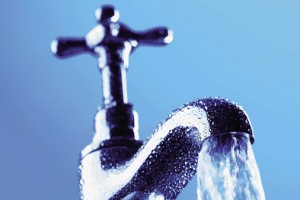Disposing of Bad Habits
It’s been a week since I vowed to reduce my plastic waste through usage of a reusable water bottle, and thus far, I’ve succeeded. Though, the goal of this ‘green’ behavior initiative is not just a week long change in habits – that would hardly be sustainable – but rather a lifestyle change that will reduce my future carbon footprint.
The goal behind a reusable water bottle is a reduction in disposable water bottle usage, but should also not discourage the consumption of water. Giving up a healthy habit in order to reduce plastic waste is not the objective, especially as both health of the body and environment can simultaneously be achieved through the usage of a reusable water bottle. Although I have managed to avoid purchasing plastic beverages and water in the most recent week, my water consumption has decreased. My decrease in water consumption is likely due to the forgetting of my Contigo bottle in my room (a problem I suspected might happen) as well as a limited number of refilling stations for my bottle when I do remember to carry it with me. I have not consciously had to make a decision of whether to go thirsty or buy a water bottle, which is good, but my water consumption levels could (and probably should) be higher. Often times, my biggest misstep has been leaving my room in a hurry, and leaving my water bottle behind in the process. I have to get in a better habit of adding a water bottle to the list of things I need to bring with me when going to class or studying.
While researching disposable water bottle usage and the waste it produces, I came across an interesting article regarding perceptions water quality in taps and water fountains. The article focused on youth perceptions, noting that youths in the study had a warped perception of thinking school water fountains were safer than tap water (Onufrak 2014). Having taken civil engineering courses in water quality, I am fully knowledgeable that the water quality from both taps and fountains is required to meet the same standard, however, having had some interactions with tap water having a slightly metallic taste, I tend to skew away from drinking tap water whenever possible. In reality, there are taps in every building, as well as water fountains for that matter, but I have tended to refill at the water bottle refilling stations in the Acopian Engineering Building and the gym. Given my knowledge set, my behavior seems odd, and although I realize the water is safer, perceptions in the back of my mind are guiding me away from consuming tap water. If I am to successfully achieve my goal of limiting plastic waste while still healthily consuming liquids, I will need to get over this over-exaggerated perception of tap water being of a lesser quality.
Onufrak, Stephen J., Sohyun Park, Joseph R. Sharkey, Caitlin Merlo, Wesley R. Dean, and Bettylou Sherry. “Perceptions of Tap Water and School Water Fountains and Association With Intake of Plain Water and Sugar-Sweetened Beverages.”JOURNAL OF SCHOOL HEALTH 84.3 (MARCH 2014): 195-204. Web. April 1 2014.

Leave a Reply